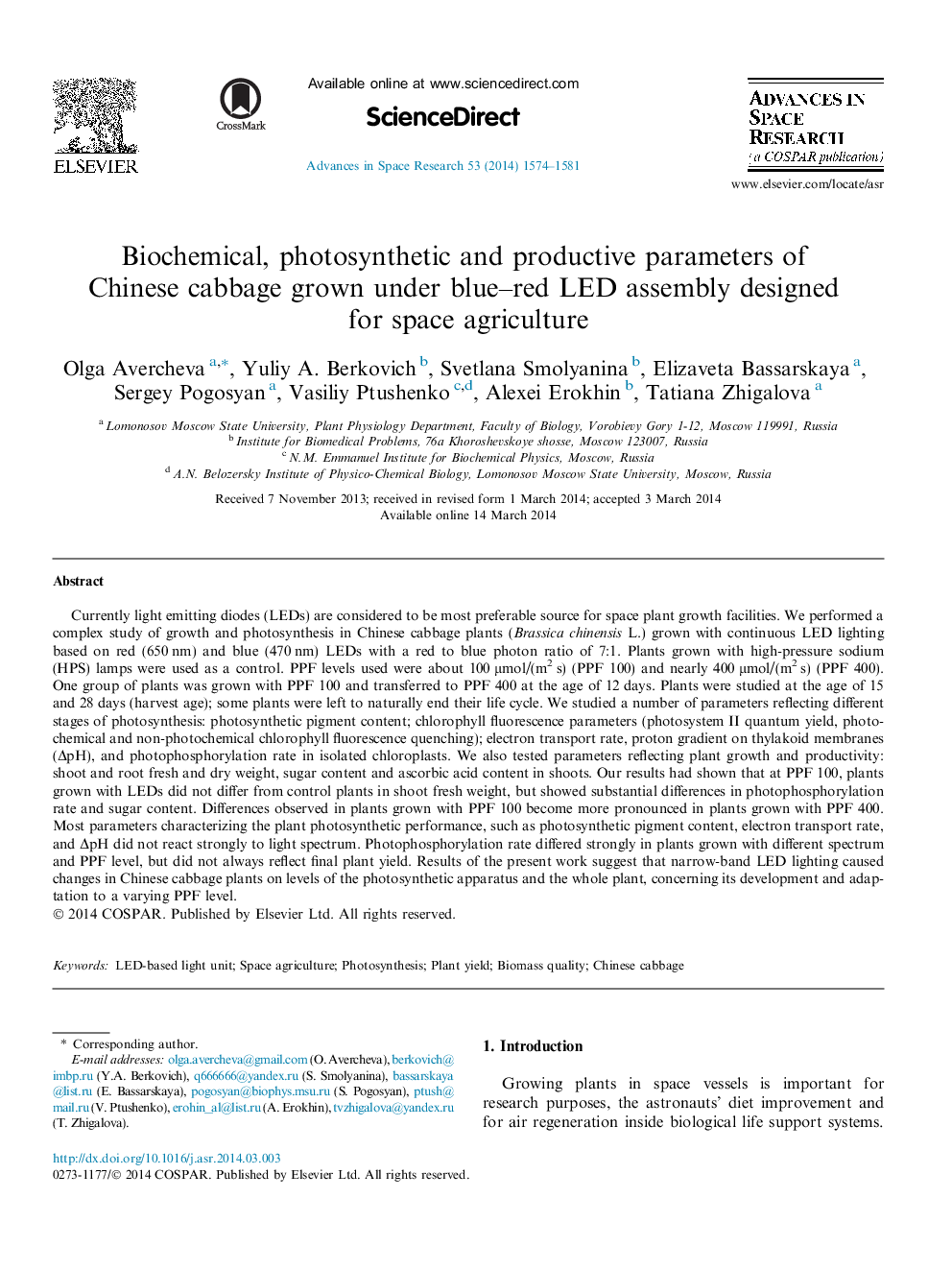| Article ID | Journal | Published Year | Pages | File Type |
|---|---|---|---|---|
| 1764058 | Advances in Space Research | 2014 | 8 Pages |
Currently light emitting diodes (LEDs) are considered to be most preferable source for space plant growth facilities. We performed a complex study of growth and photosynthesis in Chinese cabbage plants (Brassica chinensis L.) grown with continuous LED lighting based on red (650 nm) and blue (470 nm) LEDs with a red to blue photon ratio of 7:1. Plants grown with high-pressure sodium (HPS) lamps were used as a control. PPF levels used were about 100 μmol/(m2 s) (PPF 100) and nearly 400 μmol/(m2 s) (PPF 400). One group of plants was grown with PPF 100 and transferred to PPF 400 at the age of 12 days. Plants were studied at the age of 15 and 28 days (harvest age); some plants were left to naturally end their life cycle. We studied a number of parameters reflecting different stages of photosynthesis: photosynthetic pigment content; chlorophyll fluorescence parameters (photosystem II quantum yield, photochemical and non-photochemical chlorophyll fluorescence quenching); electron transport rate, proton gradient on thylakoid membranes (ΔpH), and photophosphorylation rate in isolated chloroplasts. We also tested parameters reflecting plant growth and productivity: shoot and root fresh and dry weight, sugar content and ascorbic acid content in shoots. Our results had shown that at PPF 100, plants grown with LEDs did not differ from control plants in shoot fresh weight, but showed substantial differences in photophosphorylation rate and sugar content. Differences observed in plants grown with PPF 100 become more pronounced in plants grown with PPF 400. Most parameters characterizing the plant photosynthetic performance, such as photosynthetic pigment content, electron transport rate, and ΔpH did not react strongly to light spectrum. Photophosphorylation rate differed strongly in plants grown with different spectrum and PPF level, but did not always reflect final plant yield. Results of the present work suggest that narrow-band LED lighting caused changes in Chinese cabbage plants on levels of the photosynthetic apparatus and the whole plant, concerning its development and adaptation to a varying PPF level.
